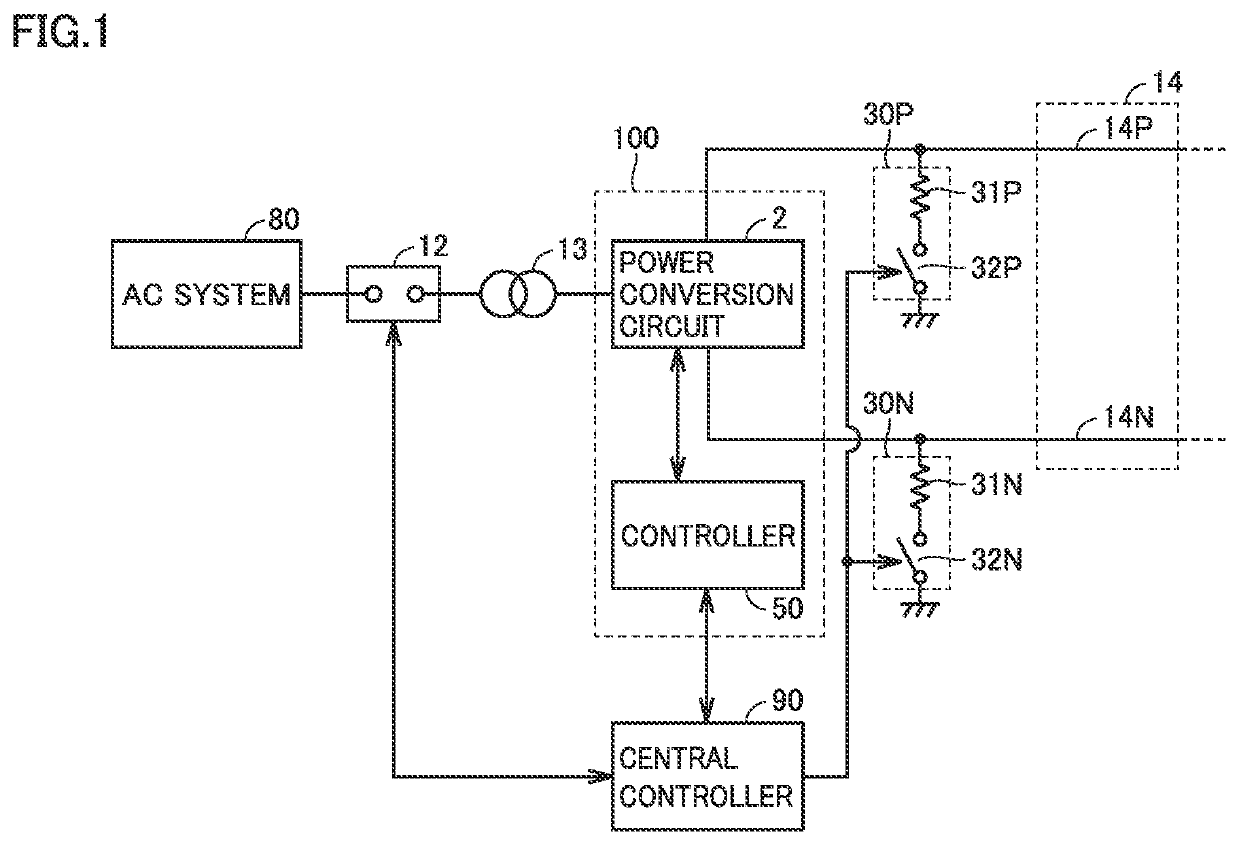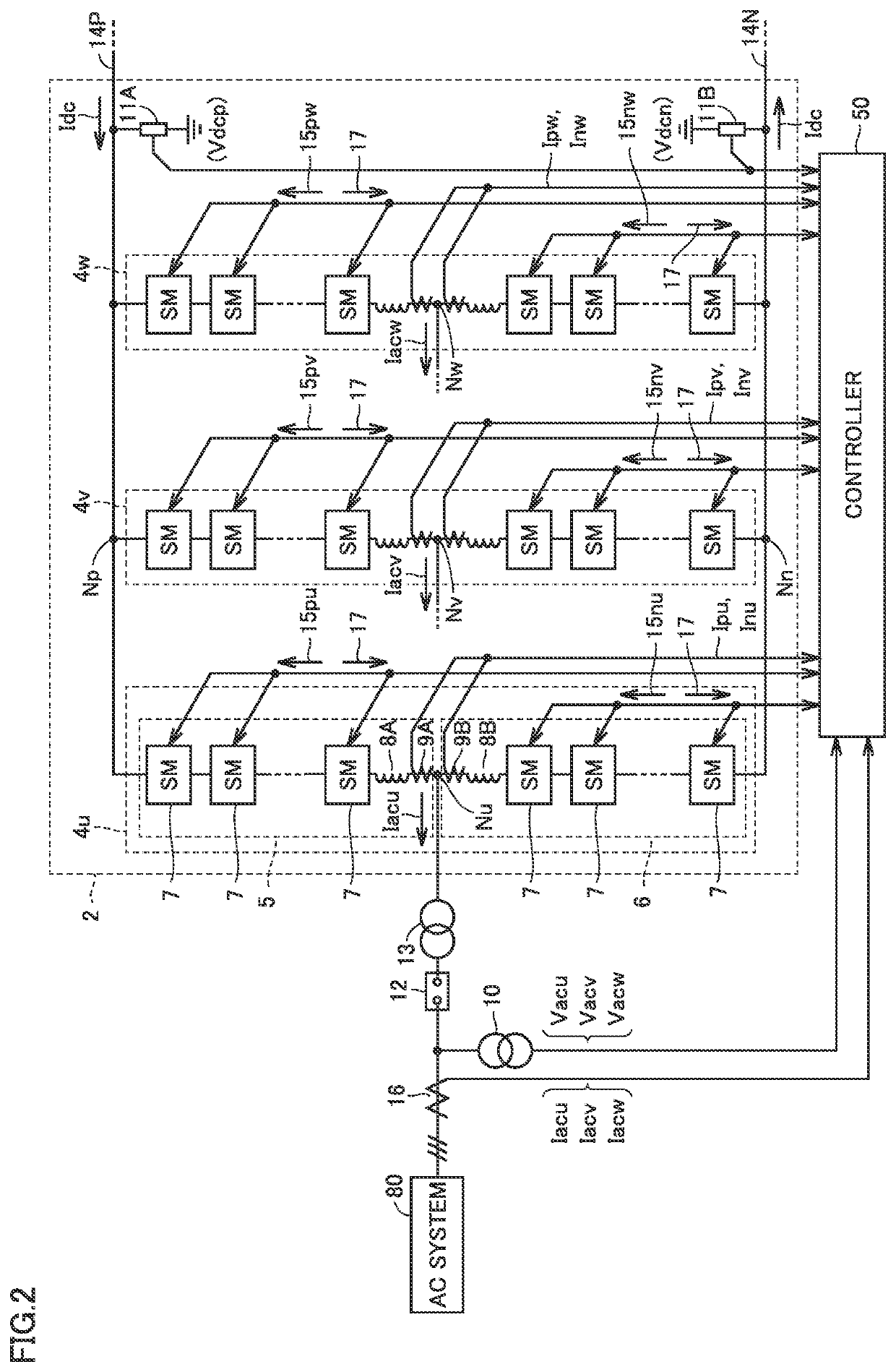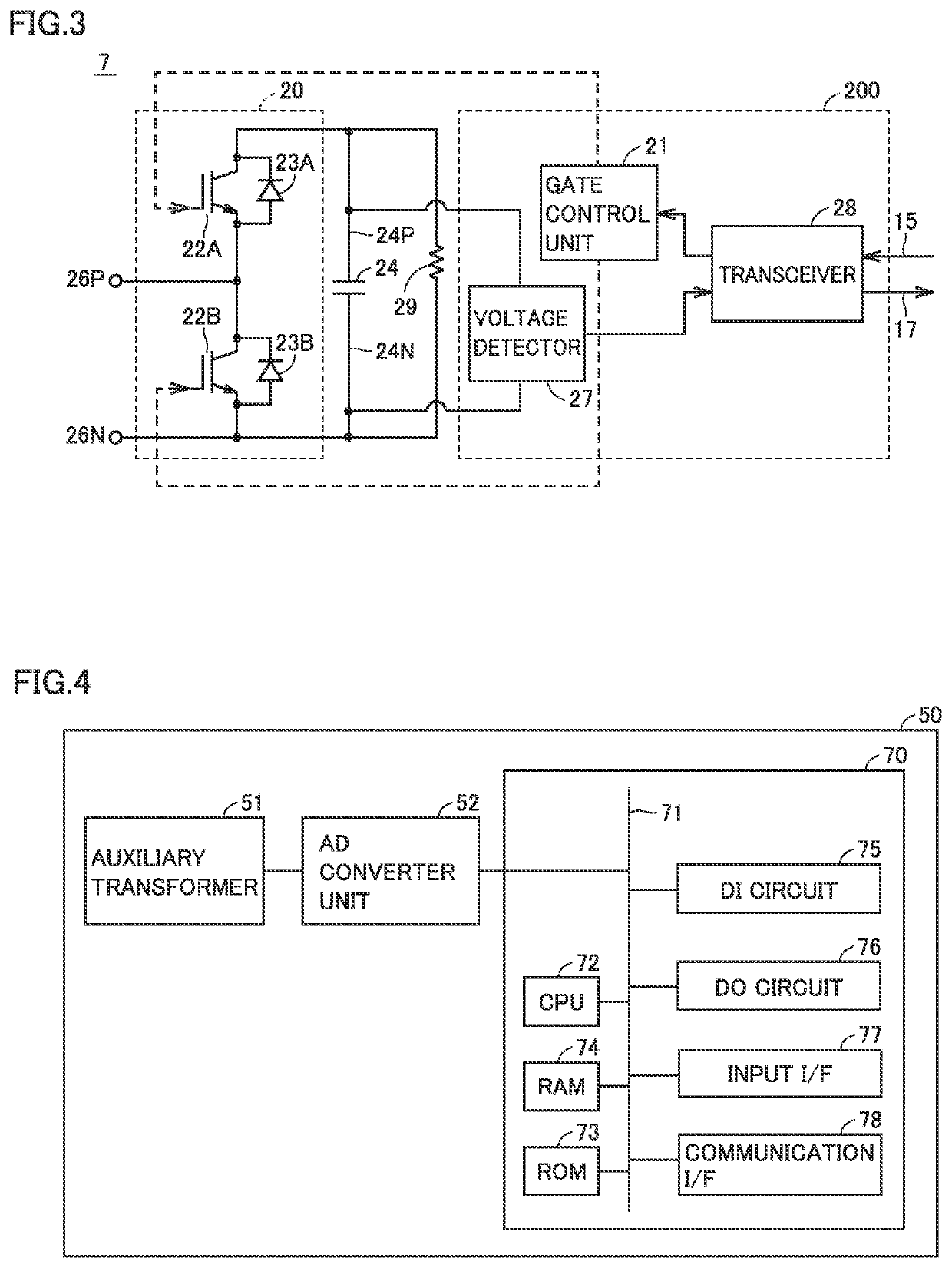Power Converter and Power Conversion System
- Summary
- Abstract
- Description
- Claims
- Application Information
AI Technical Summary
Benefits of technology
Problems solved by technology
Method used
Image
Examples
embodiment 1
[0022]
[0023]Overall Configuration
[0024]FIG. 1 shows an example schematic configuration of a power conversion system according to Embodiment 1. Referring to FIG. 1, the power conversion system is a system for controlling electric power of a DC power transmission system of single pole configuration. Electric power is transmitted and received between an AC system 80 and another AC system through a positive-side DC power transmission line 14P and a negative-side DC power transmission line 14N of a DC line 14. DC line 14 is typically a cable having a capacitance.
[0025]Power converter 100 performs power conversion between DC line 14 and AC system 80. Specifically, power converter 100 includes a power conversion circuit 2 and a controller 50. Power conversion circuit 2 is connected to DC power transmission lines 14P, 14N. Controller 50 controls an operation of power conversion circuit 2. Specific processes performed by controller 50 will be described below. Power conversion circuit 2 is co...
embodiment 2
[0123]Embodiment 1 has described a configuration in which electric charges of capacitor 24 are self-discharged after controller 50 is unable to communicate with submodule 7. Embodiment 2 will describe a configuration in which electric charges of capacitor 24 are discharged via discharge circuit 30 using a thyristor even when controller 50 is unable to communicate with each submodule 7.
[0124]Embodiment 2 is different from Embodiment 1 in that a thyristor is provided in a submodule. The overall configuration of Embodiment 2, the configuration of power conversion circuit 2, and the hardware configuration of controller 50 are similar to the configurations of Embodiment 1.
[0125]FIG. 8 is a circuit diagram showing an example submodule according to Embodiment 2. Referring to FIG. 8, a submodule 7A is obtained by replacing switching circuit 20 of submodule 7 shown in FIG. 3 with a switching circuit 20A.
[0126]Switching circuit 20A is obtained by connecting thyristor 41 in parallel with switc...
PUM
 Login to View More
Login to View More Abstract
Description
Claims
Application Information
 Login to View More
Login to View More - R&D
- Intellectual Property
- Life Sciences
- Materials
- Tech Scout
- Unparalleled Data Quality
- Higher Quality Content
- 60% Fewer Hallucinations
Browse by: Latest US Patents, China's latest patents, Technical Efficacy Thesaurus, Application Domain, Technology Topic, Popular Technical Reports.
© 2025 PatSnap. All rights reserved.Legal|Privacy policy|Modern Slavery Act Transparency Statement|Sitemap|About US| Contact US: help@patsnap.com



